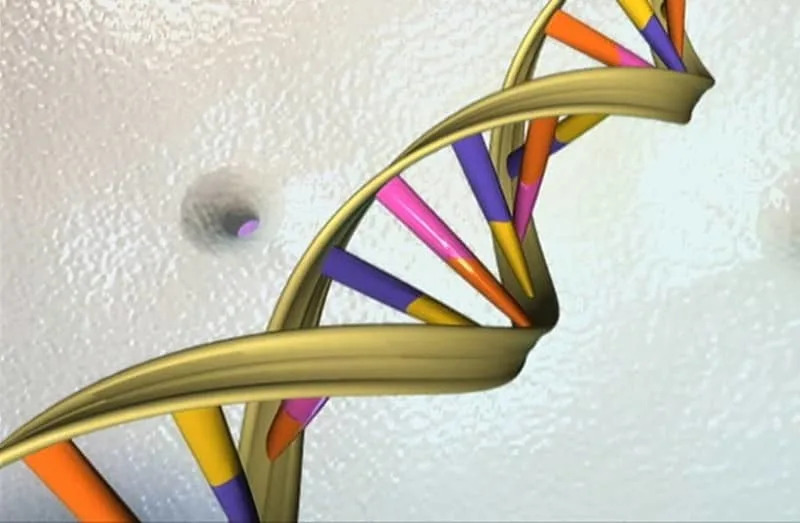'Where Did We Come From?': Challenging the classic Darwinian approach
'Where Did We Come From? The Origin and Evolution of Life' by Prof. Eugene Rosenberg and Ilana Zilber-Rosenberg begins with a detailed look at religious narratives of the origin of life.
The fascinating book Where Did We Come From? The Origin and Evolution of Life goes straight to the jugular. How did we human beings get here in the first place? And although the authors have made significant contributions to this field, their approach is modest and holistic.
The discussions range from religion to evolutionary hypotheses to AI, motherhood and social standing; from origin myths and religious narratives to David Hume, the Scottish philosopher and historian who suggested that without an idea of cause and effect, we would be incapable of making sense of the world around us.
Prof. Eugene Rosenberg, co-author together with his partner in science and life, Ilana Zilber-Rosenberg, turns 90 in just a few weeks. Talk about great genes!
The book begins with a detailed look at religious narratives of the origin of life, and then moves on to scientific theories of how the first living cells might have developed chemically, more than three billion years ago, in a primitive atmosphere – from small organic molecules to larger and larger ones, and finally to the primordial cell that life is descended from.
The authors also discuss the theory of panspermia, in which the Earth was infected or seeded by living spores from a distant planet. This theory is favored, among others, by Sir Francis Crick, co-recipient of the 1962 Nobel Prize in Medicine for discovering the double-helix structure of DNA.
 A DNA double helix. (credit: Wikimedia Commons)
A DNA double helix. (credit: Wikimedia Commons)Their hypothesis is that if chemical evolution could give rise to life on Earth, then it should also have occurred on the thousands of Earth-like planets in the universe. Furthermore, since many of these planets are billions of years older than Earth, they had a much longer time for the formation and evolution of life.
The authors’ discussion of the theory of Evolution by Natural Selection covers the contributions and life story of Charles Darwin, as well as those of his more modest co-discoverer, Alfred Wallace. Wallace not only made important scientific discoveries but was also active in land reform and the right of women to vote.
Other scientists who influenced them are similarly discussed and credited. Interestingly, the authors do not stop with humans but go on to discuss AI as an extension of our evolution. They also touch on the conflict between science and religion as it pertains to evolution. When Tel Aviv University built the Steinhardt Museum of Natural History, religious groups insisted that the exhibition of evolution be placed on the top floor so that religious people would not have to view it.
Rosenberg and Zilber-Rosenberg added a chapter (the only chapter that is not an easy read for the general reader) explaining the biological, biochemical, and genetic background to modern evolutionary views. This allows them to discuss how Darwinism itself has “evolved” over the past 165 years.
The hologenome: a new chapter in evolution
Only in chapter seven do the authors talk about their own award-winning contributions to this field. Almost two decades ago, they coined the term “hologenome” to describe the DNA that an individual possesses, which is derived not only from the genes we inherit from the mating of our parents but also the DNA that we acquire from the billions of resident microorganisms that inhabit us from birth to death.
Most of these microbial genes are transmitted from mother to offspring during birth and breastfeeding. These genes have a great effect on our health, our behavior, our sociality, and our evolution; and because they are in relatively rapid flux, their presence and activities upset the classic Darwinian approach. One of the important conclusions of the authors is that we are not individuals but rather a complex system of host and abundant and diverse microbes. Stemming from that is the conclusion that evolution is driven not only by competition but also by cooperation.
The book ends with a chapter on the implications of the authors’ theory to areas as diverse as surrogacy, social Darwinism, and collective memory.
A final word for those who noticed that I share the same name as the authors. We are not blood relatives, but we have traded thoughts, ideas, and probably bacteria over the past 50 years. Eugene was my PhD adviser and was largely responsible for my own “scientific evolution.” But did I transfer any genes of Eugene to coming generations? Read the book, and then we’ll talk.
The reviewer is professor emeritus in clinical microbiology and immunology at Tel Aviv University, known for his research on halitosis and microbial adhesion and for co-developing a two-phase mouthwash technology later commercialized as Dentyl pH. He is also a jazz player and singer, and children’s author.
WHERE DID WE COME FROM? THE ORIGIN AND EVOLUTION OF LIFE
By Eugene Rosenberg and Ilana Zilber-Rosenberg
Austin Macauley
270 pages; $10
The book 'Where Did We Come From?- Challenging the classic Darwinian approach' provides a compelling exploration of evolutionary theories, challenging conventional Darwinian views and stimulating further discussion on our origins.
The book, 'Where Did We Come From?; Challenging the Classic Darwinian Approach,' provides a thought-provoking exploration that interrogates and broadens our understanding of evolution beyond solely Darwinian theory.














